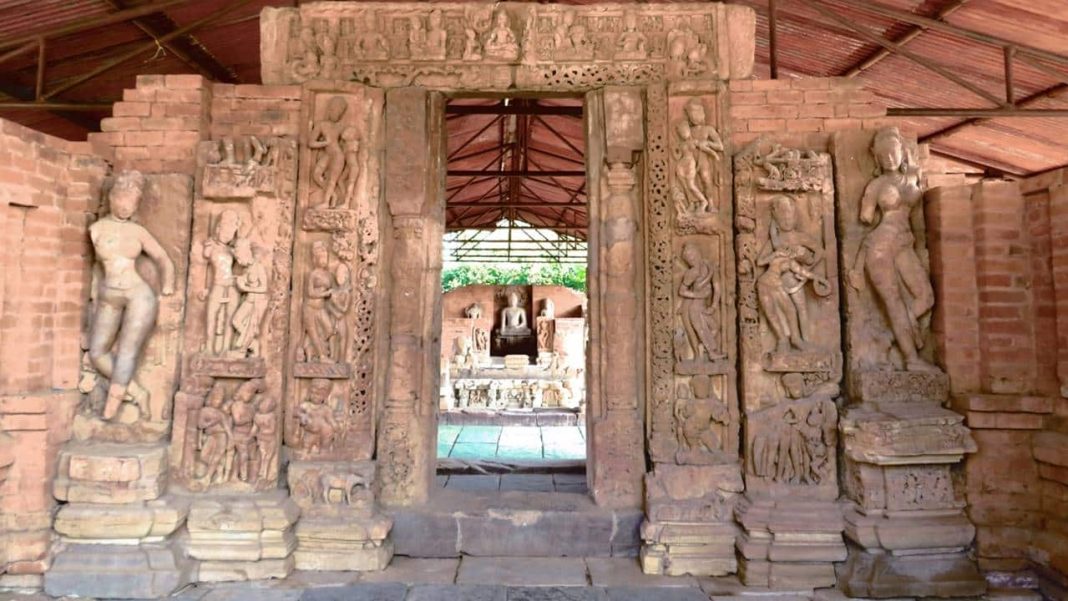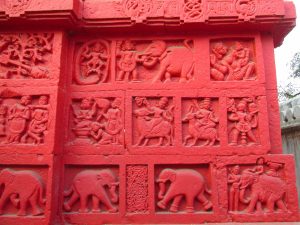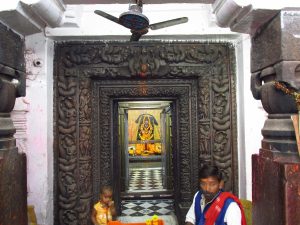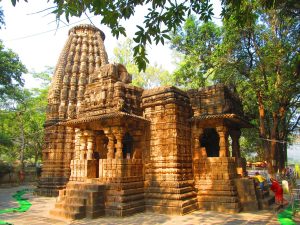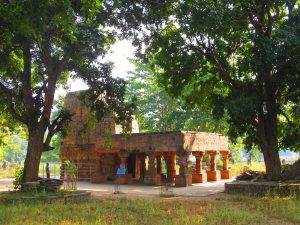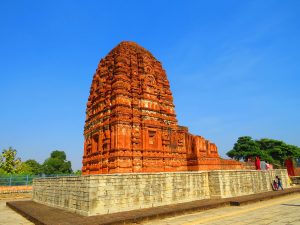Some months ago, it was announced that the country’s first AI-focused Special Economic Zone (SEZ) would come up in Nava Raipur, the new capital city of the state of Chhattisgarh. The news was heartening, and not just because the SEZ was envisaged as becoming a digital nerve centre for India, but because it broke a seemingly endless cycle of Naxal-related news from that state.
While the SEZ is expected to become a source of employment for youth from hitherto Naxal hit districts such as Kanker, Bastar and Dantewada, the state is also sitting on a wealth of tourism opportunities that it would do well to tap. Apart from natural beauty in the form of wildlife, forests, waterfalls as well as a Ramayana circuit, Chhattisgarh has numerous sites that combine stunning architectural heritage with spiritualism. While a full list may fill volumes, here’s a snapshot:
Raipur: The Dudhadhari Math is a 16
th
century CE nugget in a busy city. It’s founder, Swami Balabhadradas Maharaj used to survive only on milk and became known as ‘Dudh Ahari’. That gradually mutated to ‘Dudhadhari’, attaching itself as the name of the math. The ‘math’ is a group of temples, the oldest of which is a Narasimha shrine. The temples are an eclectic group within a leafy compound. Some have mythological stories carved on red panels on their ornate exterior. Others have their interior filled with paintings showcasing gods and goddesses. The art is so lifelike that it appears the divine figures could step out at any time. The place also has a home for orphaned boys, who are taught Sanskrit as part of their education.

Rajim: Called Chhattisgarh’s Prayag, Rajim is at the confluence of the Mahanadi, Pairi and Sondur rivers. Its focal point is the Rajiv Lochan Temple complex, dated to the 7
th
– 8
th
century period. At the corners of this complex are small shrines dedicated to Narasimha, Varaha, Vaman and Badrinath, with the main shrine in the middle. Looking beyond the layers of white paint, a visitor sees striking patterns on doorways and pillars. Divine figures, Nagas and mythological scenes are carved over the entire height of columns, indicating an ancient past.

Rajim is home to several other temples too. Notable is the Kuleshwar Mahadev, whose location at the point of the confluence turns it into an island in the monsoon. It witnesses a surge of pilgrims during Mahashivaratri. In the lanes behind the Rajiv Lochan is the Ramachandra Temple, whose mandapa contains ornate pillars that look far older than the temple’s structure.
Bhoramdeo: Imagine a Khajuraho equivalent temple standing against the thickly forested backdrop of the Maikal Hills. That’s the Bhoramdeo Temple, built in the 14
th
century by Nagavanshi rulers. Following a Nagara style of architecture – complete with a mandapa, shikhara and an inner sanctum – its exterior is embellished with friezes carved into stone, showing a range of deities, voluptuous apsaras and erotic couples. Within the shrine is a Shiva Linga that stands on 16 pillars.

The erotic theme recurs at a nearby shrine, the Madwa Mahal. Curiously, in this shrine, the sanctum’s exterior is richly carved while the mandapa is entirely plain and may have been added much later. Close at hand is the Chherki Mahal, a simple, yet elegant shrine.

Sirpur: Chhattisgarh’s crowning glory in terms of heritage is the vast excavated site of Sirpur. Indeed, the red brick Laxman Temple here is an icon for the state. Sirpur was the capital of the Dakshina Koshala kingdom. Excavations have revealed nearly thirty Shiva and Vishnu Temples, numerous Buddhist and Jain viharas, ancient marketplaces as well as community bathing sites. The Teevardev Complex doesn’t just include Buddhist viharas, it also has a nunnery, all presided over by a huge Buddha statue. The pyramid-like Surang Tila resembles a Mayan shrine. Sirpur’s oldest remains date to the 3
rd
century BCE and the most recent is the 18
th
century Gandeshwar Temple, located close to the Mahanadi River, making Sirpur a stunning repository of nearly two millennia of heritage.
![]()
Every corner of the state is filled with iconic shrines. At Tala’s oddly named Jethani-Devrani Temples is a statue of Rudra Shiva that weighs nearly five tonnes. It is a strange statue, an amalgamation of various animals combined to resemble the form of a man. On an islet of the Shivnath River is the Madku Dweep, home to 11
th
– 14
th
century Kalachuri era Shiva temples. Former Naxal stronghold Dantewara is named after the 14
th
century Danteshwari shrine, which is also a Shaktipeeth. This list could go on and on.
And as we hope for more positive stories from Chhattisgarh, the most heart-warming one to come out is that of Animesh Kujur. At the recent Dromia International Sprint & Relays meeting in Greece, he broke a national record in 100m, becoming the fastest Indian currently. Can one dream of an Olympic Medallist from Chhattisgarh?
(Arjun Kumar is a heritage explorer by inclination with a penchant for seeking obscure sites. A brand consultant by profession, he tweets @HiddenHeritage.)
Views are personal, and do not represent the stand of this publication.


